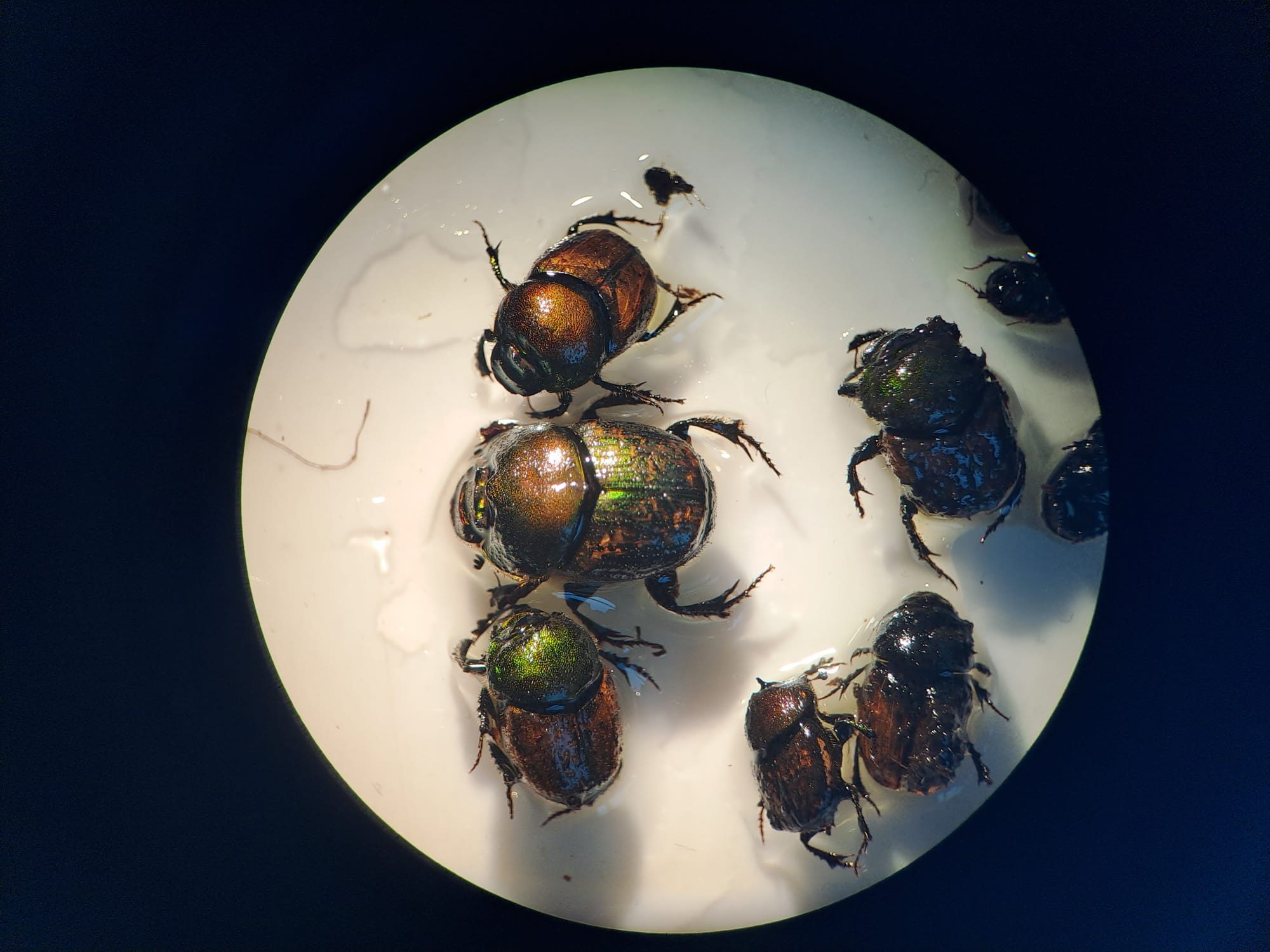Dung Beetles and Pasture Health

By Amy Oboussier
Believe it or not, dung beetles play an important role in the ecosystem of farms and we have a lot to thank them for:
- Soil health and nutrient recycling – Dung beetles aid in nutrient recycling by breaking down animal waste, accelerating decomposition, and creating channels for decomposition organisms to access dung, returning valuable nutrients back into the soil, and enhancing overall pasture health and fertility. Additionally, their tunnelling activities mix organic matter into the soil, improving soil structure, water infiltration, and aeration, thus contributing to soil health and fertility.
- Pest control – Certain species of dung beetles play a role in pest control by removing and burying dung that could serve as a habitat for pests like flies and parasites. By reducing the availability of suitable breeding sites for these pests, dung beetles contribute to the natural regulation of their populations
- Pasture Health – Dung beetles will disperse accumulated livestock dung. Their actions prevent the formation of dense patches and ensure a more even distribution of nutrients throughout the pasture. This contributes to healthier and more productive grazing areas for livestock, enhancing overall pasture quality.
Dung beetles serve as a reminder that nature-friendly farming not only benefits wildlife, but can promote healthier more productive farming systems. They can also be a helpful indicator of a healthy pasture and ecosystem on farms. As part of a research project Andy Gray, at Elston Farm, has been monitoring dung beetles with cutting-edge AI technology, he tells us more:
“Biodiversity monitoring is time-consuming and if left to people alone, can be skewed by the snapshot approach of the monitoring only being done when the ecologist or recorder is there. We use a UKRI grant to develop AI camera traps to record and monitor dung beetle arrivals at cowpats. The camera is aimed at a white surface with a 3 inch hole cut into it. The hole is arranged above a fresh cowpat. The AI camera can recognise a visitor as an insect, and then tracks it, whilst taking its photograph every second. We share these images with Kelly Jowett, a Rothamsted carabid scientist so she can identify them. The ultimate goal is to teach AI to recognise these beetles and automatically monitor them 24 hours a day. We chose to start with dung beetles because they are indicative of a healthy ecosystem and farmers are interested in them because of the benefits this blog describes.”


